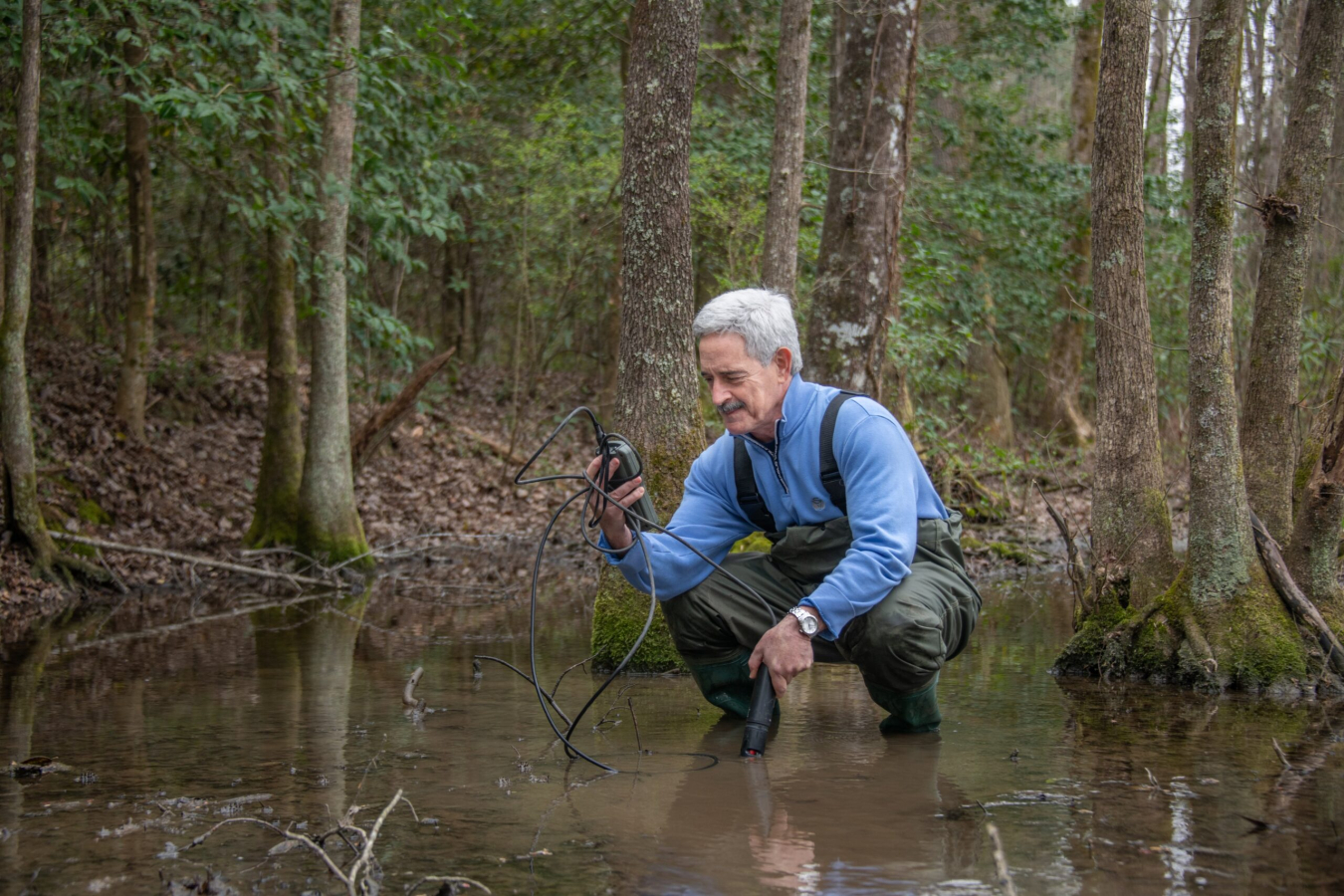Researchers at the University of Georgia’s Savannah River Ecology Laboratory studied water movement in wetlands and its role in filtering contaminants in the Tims Branch watershed, a riparian wetland on the Savannah River Site.
Office of Environmental Management
March 18, 2025Daniel Kaplan takes a reading from a riparian wetland on the Savannah River Site. Kaplan is a senior research scientist at the University of Georgia’s Savannah River Ecology Laboratory, an associate director of the university's Research Institute and lead investigator of a study on water movement in wetlands and its role in filtering contaminants in the Tims Branch watershed, a riparian wetland on the site. (Photo courtesy of Savannah River National Laboratory).
AIKEN, S.C. — Researchers at the University of Georgia’s Savannah River Ecology Laboratory studied water movement in wetlands and its role in filtering contaminants in the Tims Branch watershed, a riparian wetland on the Savannah River Site.
“We chose this area specifically to understand how water moves. This allows us to predict how wetlands hold onto contaminants,” said Daniel Kaplan, a senior research scientist at the laboratory, associate director of the University of Georgia’s Research Institute and lead investigator of the study.
The research team collected monthly water samples from rainfall, streams and groundwater at different sites within the watershed. By analyzing stable isotopes of hydrogen and oxygen, they traced how different water sources mixed over time. The team members collected additional measurements that helped determine how groundwater chemistry influenced stream water quality.
The study found that groundwater renewed at 2 to 4% per day, taking about two to four weeks to mix fully. Groundwater contributed up to 4% of stream water in some areas, while stream water comprised nearly 70% of groundwater in others.
These exchanges shifted seasonally, with groundwater flowing into streams more in winter and stream water seeping into the soil in summer, influencing water quality and contaminate movement.
The movement of water within the environment is a key factor in assessing the distribution of various heavy metals and contaminants, including uranium, throughout a riparian wetland. Effective environmental management is crucial to ensuring the health and safety of the Central Savannah River Area, a region of Georgia and South Carolina close to the Savannah River and Augusta, Georgia.
“For future work, we hope to utilize this hydrological model with other studies to improve contaminant management and reduce risks to both human and environmental health across the Central Savannah River Area and DOE complex,” Kaplan said.
-Contributors: Katrina Ford, Tyjaha Steele
To receive the latest news and updates about the Office of Environmental Management, submit your e-mail address.


